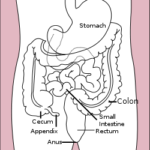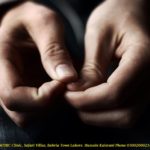
After prescribing the remedy, the physician shall very carefully observe his patient in every respect;
- his general condition,
- aggravations and amelioration of symptoms,
- any change in the symptoms or in the patient himself, etc.
The Observations
- After giving the medicine to the patient if the physician's observation is a prolonged aggravation and final decline of the patient, the case is incurable.
- The second observation is, the long aggravation, but final and slow improvement. It is a hopeful case with prolonged repetition of the same remedy at longer intervals. For many years you may go along with prolonged aggravations followed by amelioration untill an outward manifestation appears whereby the patient will attain final recovery.
- The third observation after administering the remedy is, quick aggravation, short and strong with rapid improvement of the patient. Whenever you find an aggravation comes quickly, is short, and has been more or less vigorous, then you will find improvement of the patient will be long, the structural changes many appear in the surface organ, and with the passage of time the surface organs regain their natural structure after they have dragged out all that was destroying internal organs.
- The fourth observation relates to cases in which we have no aggravation with recovery patient. The remedy administered was correct according to the symptoms, so was the potency suitable to the vitality of the patient. In such cases there is no organic disease, and no tendency to organic disease. It is simple functional disorder of the nerves.
- The fifth observation is, the amelioration comes first and the aggravation comes afterwards. This condition is unfavourable. Either the remedy was only a superficial remedy, and could only act as a palliative, or the patient was incurable and the remedy was somewhat suitable. The physician should re-examine the patient and find out whether the symptoms relate to that remedy. If the remedy is found to be correct then the case is incurable. If the remedy selected was not correct, the Physician will take up the case again, and very carefully select the remedy according to the symptoms.
- The sixth observation is too short relief of symptoms. It is because of some conditions that interferes with the action of the remedy. The physician has to find out that condition – whether the patient is causing that condition or there is some deep rooted destructive process going on in some vital organ. It is not difficult to find out the first cause and remove it by cautioning the patient, but it is quite difficult to arrive at the depth of the second cause; in spite of the difficulty it is the duty of the physician to know that cause and remove it.
- A full time amelioration of the the symptoms, yet no special relief of the patient is the seventh observation. Such patients have some permanent deformity or an organic bson that prevents improvement beyond a certain stage. A patient with one kidney can only improve to a certain degree; patients with fibrous structural change in certain places, tubercles, that have become encysted and lungs capable of doing limited work, will be ameliorated from time to time with remedies, but the patient is only curable to certain extent, he/she can never be cured. The patient is palliated in this instance.
- The eighth observation is, some patients prove every remedy they get; patients inclined to be hysterical, overweight, oversensitive, to all things. The patient is said to have an idiosyncrasy to everything, and these oversensitive patients are often incurable. They are born with this sensitivity and the will die with it.
- The ninth observation relates to new symptoms appear after the remedy. If a great number of new symptoms appear after the administration of a remedy, the prescription will generally prove an unfavourable one. After these new symptoms have passed away, the patient will settle down to he original state and no improvement take place, the case is incurable.
- The tenth observation is when old symptoms are observed to reappear. After the aggravation has come and symptoms, we observe, disappearing in the reverse order of their coming, the disease is curable. The medicine must be let alone. If the old symptoms come back to stay, the repetition of the dose is often necessary.
























 Hussain Kaisrani, The chief consultant and director at Homeopathic Consultancy, Lahore is highly educated, writer and a blogger
Hussain Kaisrani, The chief consultant and director at Homeopathic Consultancy, Lahore is highly educated, writer and a blogger 